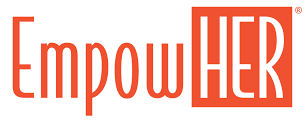Blog
Topics
POPULAR TAGS
Unequal Schooling
In the year 2000, I was Arianna Huffington’s guest at the Shadow Convention that she organized in LA. I participated in a CNN discussion on the efficacy of teenagers and politics. It was at this time that I met Johnathan Kozol, the author of “Savage Inequalities.” I got to know Johnathan and later interviewed him on my radio show “Let’s Talk with Dr. Gail Gross.” What I learned was that as long as education is funded by real estate taxes, there will always be savage inequalities in schools across America. Lower real estate taxes, from impoverished neighborhoods, guarantee that students will have poorer buildings, less equipment, fewer microscopes, books and supplies. Even though we do have a compensatory amount of money that we guarantee these schools, it is a small drop in the bucket, relative to wealthier neighborhoods that have no limitations on advantages.
However, these economic inequalities are not the sole measure of our problems in education.
The problems we face can be answered through 6 easy steps:
- Standards for teachers
- Standards for students
- Standards for families
- A standardized approach to federal education
- A standardized curriculum
- A standardized certification test for teachers.
The key word for academic inequality is: standards.
Many years ago Oprah Winfrey was quoted as saying that Mr. Winfrey, her father, raised her with strict standards and we can all see how well that worked out. Instead of fearing the competition of charter schools, what public schools should be doing is taking an example from them. Wonderful schools such as KIPP Academy (now both a national and international model for charter schools), the 15 Tisch Schools across America, and the 10 IDEA Schools in the Rio Grand Valley, all demonstrate that a population of poor children, mostly on the federal lunch program, can get a wonderful education and go to wonderful universities including the Ivy leagues. In fact, our own university system is the best in the world because it is rated on a competitive scale.
We should be looking at what these schools are doing differently, because they are succeeding where public schools are failing. Many of the founders of these schools will tell you that they look for teachers from the top 10 percent of their graduating classes, to whom they give leadership training. Further, they have contracts with parents who commit to parental involvement in their child’s education… and if they break that contract their child loses his or her seat at the table. Also, students have standards to which they must adhere, in order to remain enrolled.
What we lack in America is the national will to change, because to really remediate our education system, we must confront the unions. I have talked to many principals who would love to fire an ineffective teacher, but cannot because the teacher has tenure and they are stuck with him/her until the teacher leaves or retires. The best that they can do is pass along that teacher to a different school. This is the real injustice in the inequality in education, keeping the status quo.
Finally, you have to know where you’ve been, to know where you’re going. Because education was not mentioned in the Constitution, we’ve had an unstable national approach. Every four to eight years, the Secretary of Education changes with the arrival of a new President, Party, and education philosophy. So in the Bush years you had a conservative approach, in the Obama years you have a liberal approach. But what we need is a standardized federal approach to education, a standardized curriculum, and a standardized certification test for teachers, so that teachers master the material they are expected to teach, and a Secretary of Education not subject to the whims of different philosophies and incoming parties.
The country of Finland is another great example of education that works. In the 1960s, the whole country had an economic reconstruction and threw the public schools into the mix. They determined that they would only hire teachers from the top 10% of their graduating classes, from the top eight universities in the country, and each teacher was required to have a master’s degree. This made a difference. Now Finland has one of the best educational systems today — not just in Europe, but in the world. And, if we look to Germany and Japan, we see countries whose educational structures were created by us after World War II, a lecture model, nothing sexy and provocative.
What is different in the educational outcome of these countries is their culture: each has a culture of parents who are invested and involved in their children’s educational performance. In Germany and Japan, if students do not do well academically during elementary and middle school years, they track out of college-bound courses and are moved to vocational courses. Thus, these parents recognize how important academic performance is and how it can impact the outcome of their children’s future. As a result, education in these countries is valued as the most important determinant in a child’s future.
In the final analysis, examples such as the KIPP Academy, the IDEA schools, and Tisch schools should be the models that we use in every state of the union. They should be the paradigm for our Presidents, for our Secretary of Education, and for the teachers’ unions including the National Education Association and the American Federation of Teachers. An implementation of the above six steps — standards for teachers, standards for students, standards for families, a standardized federal approach to education, a standardized curriculum, and a standardized certification test for teachers — will go a long way towards solving our educational disparities. And, until we are all on the same page and put our children’s education ahead of unions and politics, and truly execute the will of the people, we will not solve the problem in our savagely unequal schools.





